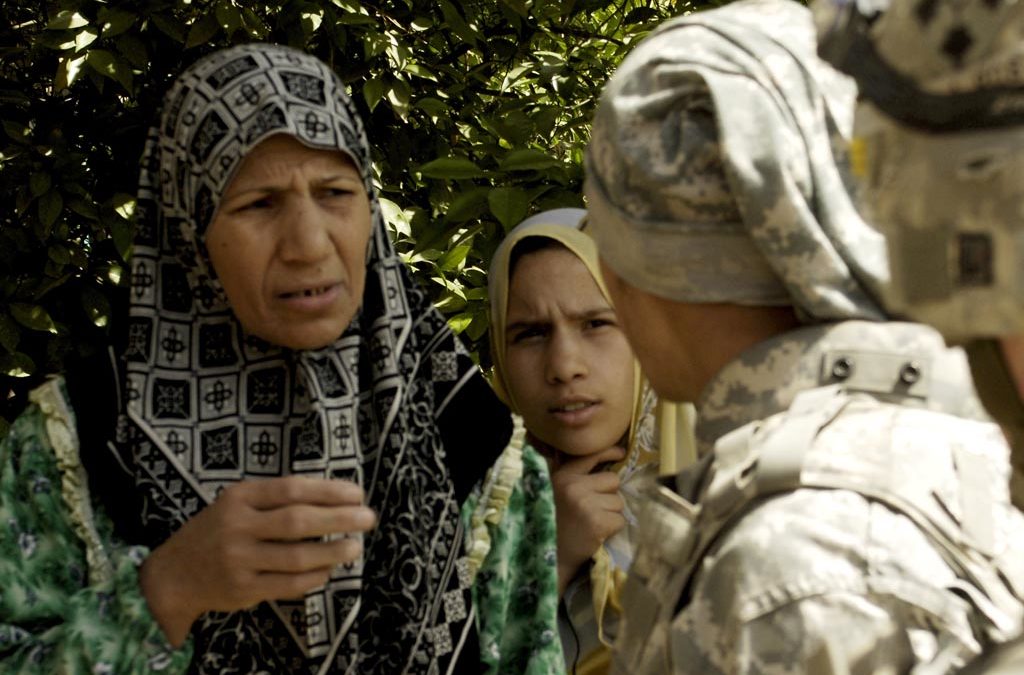Larissa Fast
It may seem logical that military and civilian actors should work in close collaboration, especially in places like Afghanistan and Sudan, where non-governmental organizations and other humanitarian actors work in close proximity to combat and peacekeeping operations. After all, both civilian and military actors desire peace and stability, so why not work together to reach that goal? Lack of collaboration, the reasoning goes, only results in duplication of efforts, poor and inefficient programming, and waste.
Yet in the midst of increasing calls for civil-military collaboration in rebuilding war-torn societies, humanitarian actors often voice dissenting opinions. “Defense, diplomacy, and development” efforts might share a common goal, but there is nothing to suggest that all of these functions should rest with a single actor. For humanitarian actors, associations among peacebuilders and the military are fraught with controversy and even danger.
NON-LETHAL WEAPONS OF WAR
The push for closer relationships among civilians and the military is occurring on both a conceptual level and in the field. The debate is shaped by the culture clash between the two groups: military culture, where discipline and hierarchy structure relationships and activities, contrasts with humanitarian culture, which prizes independence and particularity. The impetus for and rationale behind closer collaboration comes from the notion of humanitarian assistance as a foreign policy tool. To use military terminology, humanitarian aid can be a “non-lethal” weapon of war.
For humanitarian actors, associations among peacebuilders and the military are fraught with controversy and even danger.
While these ideas have been around for decades, the concept of NGOs as “force multipliers” gained new traction in governmental and military circles after September 11 and the wars in Iraq and Afghanistan. Yet the military’s expertise lies in war-fighting and security, not in peacebuilding or development. Now the Pentagon controls an expanding budget for “hearts and minds” activities. In Afghanistan, more than $1 billion has been earmarked this year for assistance and reconstruction funding to be disbursed by local U.S. commanders. Yet it is unclear what payoff or positive impact these types of projects have.
Recent research from the Feinstein International Center at Tufts University questions the real impact of quick-impact projects designed to win the hearts and minds of the population as a counterinsurgency tool. Instead, the research suggests, such projects undermine accountability and even fuel corruption.
PRESERVING OPERATIONAL INDEPENDENCE
On the ground, humanitarian actors argue that military actors are increasingly encroaching on “humanitarian space.” This is especially problematic in combat zones, though it is less controversial in natural disasters. Despite some difficulties, the U.S. military’s quick deployment to assist with Haiti earthquake relief efforts, for example, undoubtedly helped save lives and ensure security.
Humanitarians do engage with military actors in war zones, but most prefer to do so on their own terms.
Most nongovernment organizations, especially humanitarian actors, operate independently from government agendas and provide assistance based on two pillars of impartiality: category-blind assistance (non-discrimination) and delivery according to need (proportionality). Humanitarians do engage with military actors in war zones, but most prefer to do so on their own terms. The United Nations, for example, is taking a stand in Afghanistan by refusing to cooperate in the reconstruction activities accompanying NATO’s recent offensive in Marja. In some places NGOs have painted their vehicles pink, to clearly demarcate themselves as separate from military and even U.N. agencies.
A MATTER OF LIFE AND DEATH
These issues are not simply “academic.” In its summary of security incidents in 2009, the Afghan NGO Security Office reported that many violent incidents against humanitarian groups come from armed opposition groups. In 2009, 19 humanitarian staff workers (all of them local Afghans) were killed in Afghanistan. While it is notoriously difficult to determine the true motive behind attacks, the security office suggests that the Taliban and other armed opposition groups distinguish between “neutral” groups and those perceived to be ”non-neutral,” i.e., associated with counter-insurgency forces. Preserving independence in a zone of armed conflict is literally a matter of life and death, and it requires nongovernment organizations to pay closer attention to the images they project and to their association with security forces.
Larissa Fast is assistant professor of conflict resolution at the Kroc Institute.



